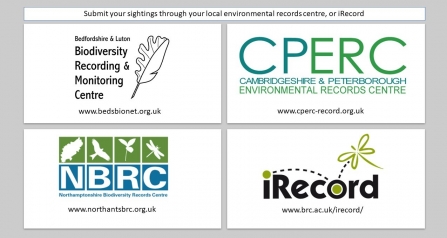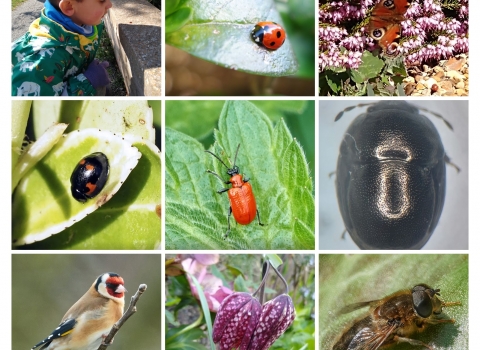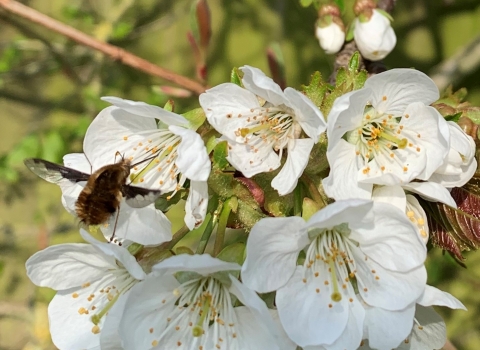If you step out of your door and look at a patch of flowers on a fine day, you are likely to come across a variety of colourful flies hovering around them. Many of these are hoverflies. There are nearly 300 species of hoverflies in the British Isles and can be found in a wide variety of habitats, including gardens. Gardens and green spaces can be very important for hoverflies, the majority of which need to visit flowers to feed. Over the next 2 weeks we are asking you to look out for the hoverflies in your garden or on your exercise walks and see what you can spot!
On the hunt for hoverflies
The hoverfly Cheilosia illustrata
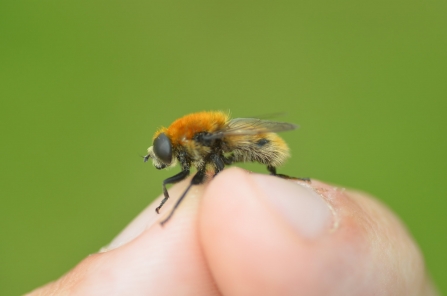
Adult hoverflies are incredibly important pollinators and the larvae of many common species have a voracious appetite for aphids, so they really are the gardener’s friend. They spend most of their life cycle in this stage as are only an adult for a couple of weeks. The adults of several species are convincing bee mimics but by looking at them closely and their behaviour, then it becomes easy to tell them apart. They are also sensitive indicators of the health of the environment. All in all they are amazing insects!
Many hoverfly species are colourful and photogenic, with a wide variety of species being able to be identified from photos and are widespread. Due to several reasons, many hoverfly species are in decline, so generating data on which species are found where is really important and something that everyone can get involved with.
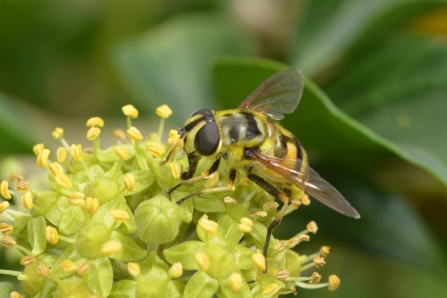
Myathropa florea, the batman hoverfly. Image by Ryan Clark
John Showers, the Northamptonshire county recorder for Diptera (true flies), has put together a really excellent guide which describes how you can tell that you have a hoverfly, and how to identify the species that you are most likely to come across in your garden. During the 11th – 24th May, in our Monitoring and Research Facebook Group, we will be posting a lot about hoverflies and encouraging you all to do the same. using #WIldlifeFromHome. We will help you identify and record your findings and learn about these wonderful insects. Download the guide below and get spotting hoverflies! Happy hoverating!
Don't forget that we would love if you would send in your records for any species that you see. This allows scientists at a local, national and international scale see how our wildlife is faring and protect it.
